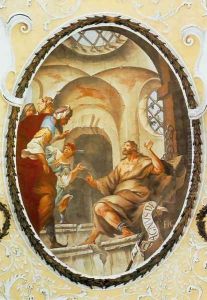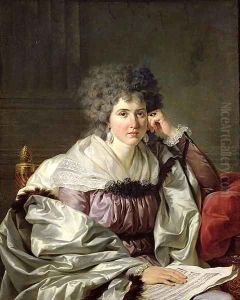Johann Erhard Gruber Paintings
Johann Erhard Gruber was a German artist, primarily known for his work as an engraver and mapmaker in the 18th century. Born in 1695, Gruber's early life is not extensively documented, but it is known that he came of age in a period rich with baroque art and the burgeoning influence of the Enlightenment across Europe. His contributions to the world of art are most notable in the realm of cartography, where his engravings served not only as functional maps but also as works of art that captured the aesthetic values of his time.
Gruber's work as an engraver would have involved intricate craftsmanship, a steady hand, and an eye for detail, as he would have had to carve his designs into metal plates which could then be inked and used to print images on paper. This was a laborious process that required both artistic skill and technical precision. His maps would often be embellished with decorative elements such as cartouches, scale bars, and compass roses, reflecting the baroque sensibility of elaborate ornamentation.
Unfortunately, not much specific information about Gruber's individual works, commissions, or his impact on the art world remains widely known or discussed in contemporary art historical discourse. However, it is clear that as an engraver and mapmaker, Gruber contributed to a body of work that was essential for the navigation and exploration that characterized the Age of Discovery. His maps would have played a role in the dissemination of geographical knowledge during a time when such information was crucial to trade, colonization, and scientific inquiry.
Gruber passed away in 1777, leaving behind a legacy as a craftsman who bridged the world of art and the emerging field of science through his detailed and decorative maps. While individual works of his may not be as celebrated as those of some of his contemporaries, his contributions to the cartographic arts reflect the interconnectedness of different fields during the Enlightenment, and his engravings remain valuable to historians and collectors alike.

